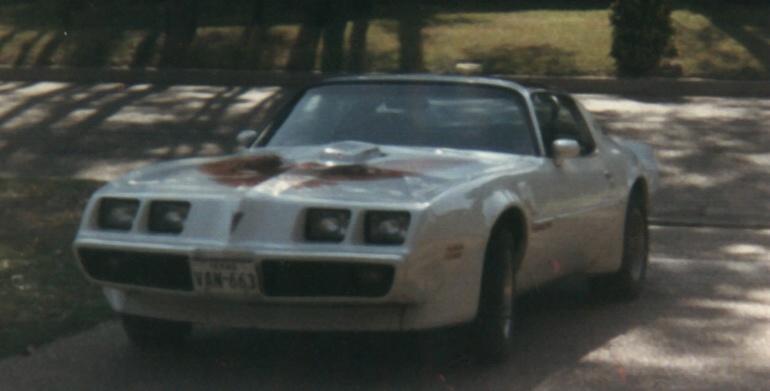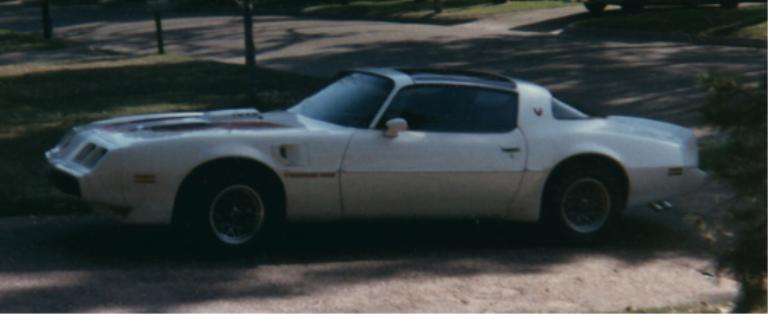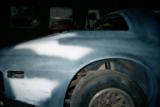|
|
|
 |
| Home Page | About Page | Photo Page | Contact Page | Favorite Links |
 |
| 1980 Pontiac Trans Am Project |
 |
|
Radial Tuned Suspension Quoted from Gary Lisk's Second Generation Trans Am site, 1973 page: "Chassis wise, Pontiac introduced "Radial Tuned Suspension" to the world. When ordered, it included the GR70-15 radial tires replacing the F60-15 bias ply tires. RTS delivered a much more comfortable ride, while delivering cornering grip nearly on par with the bias tires. Radial tires were still very much in their infancy in 1973, and the available radials could not match the cornering power of a very developed non-radial. As the radial has a more compliant sidewall, reducing the rear roll stiffness was allowed and RTS cars did come through with a smaller rear stabilizer bar . RTS (Radial Tuned Suspension) in 1974 included the following:
WS6
Suspension Package "Chassis wise, the Trans Am had no equal from cars built in America. Car & Driver subjectively proved that in the September '79 issue when the T/A was pitted against Corvette, Z28, Capri, the new front wheel drive Phoenix. Hands down, the Trans Am was judged to be several notches above the rest by having better road manners and in real world driving conditions. Even though the Camaro Z28 was an extremely close cousin to the Trans Am, the handling was dialed in for under steer while the big stabilizer bars and higher rate rear springs made the T/A much more neutral. Lateral acceleration was down to .81g, but this may be the result of differing skid pad diameters. On a small diameter skid pad, generally higher numbers will be produced. The surprising equation in all of this is the Trans Am chosen to do battle was only fitted with a 150 hp 301 cubic inch V8! The 301 was picked because it put less weight over the nose, but we folks with 400's known you offset the nose-heavy tendencies with subtle applications of horsepower. The most important news here is that even handicapped, we won." The WS6 package was first officially offered by Pontiac in 1978. Although rumor says that it began in '77 as a mid-year addition. It included:
The 1979 (possibly even the 1978) WS6 package added rear disc brakes and a 14:1 constant ratio steering box in place of the 15:1-13:1 variable ratio unit.
Planned Suspension Enhancements 4 Wheel Disk Brakes Quoted from Gary Lisk's Second Generation Trans Am : "The new four wheel disc brakes of the WS6 cars knocked a yard from the stopping distance, bringing the Trans Am down from 60 mph in only 146 feet." Drive Train The drive train includes the stock TH-350 transmission with a Posi-Trac rear end. Quoted from Gary Lisk's Second Generation Trans Am site: "Many T/A's left the factory with economy 2.56:1 rear axle ratios, rather than a palatable 3.42." The Engine Rather than rebuild the original Pontiac 301 big block I have replaced it with a Pontiac 400 c.i.d. big block and 4x heads with a higher compression ratio than stock. In the process of rebuilding, the block was bored 0.040" over yielding about 408 cubic inches of displacement. The 4X Heads 1973 page: "The cylinder heads topping the motor were again of a new casting number, the 4X. This cylinder head was also used on the 400 engine available on other Firebirds. Actuating the 2.11" intake valves was a camshaft with .410" of intake and .414" of exhaust lift. Although the lift figures are still respectable, the duration of the cam was hacked off to 273 degrees on the intake cycle and 289 degrees for the exhaust. As if the shorter duration of the cam was not enough to drop power, the exhaust valves shrunk to 1.65 inches of head diameter." 1974 page: "the 225 hp produced the base motor wasn't too bad after all. Using the 4X head castings introduced in 1973, the power specs were the aforementioned 225 horsepower at 4000 rpm while only 330 lb/ft of torque was developed at 2800 rpm. The 8.0:1 compression ratio was unchanged." "For valve train, the 400 V8 still had a somewhat aggressive camshaft profile, with the gross intake lift measuring .410 inches while the exhaust maintained a .415 inches if lift. The duration of the camshaft was the same 273 degrees as last years base 455, but the exhaust duration was missing seven degrees, measuring 282 total degrees. Ram-Air Restoration (800-421-8455) manufactures a reproduction of the 1970 Ram Air III exhaust manifolds. David recommended these over headers for trouble free maintenance with much of the performance gain and growl. Instead of a manifold that just collects the exhaust and dumps it into the tailpipe, the Ram Air manifolds feature longer individual runners from the exhaust port down to the pipe flange. They are designed to improve low R.P.M. horsepower and sound great. Click to hear the Pontiac 408 without tailpipesI bought two Ultra Flo Welded mufflers by Dynomax from Jon at Mike's Offroad Shop in Euless (817)354-5999. My Ultra Flo 17219 are rated to flow 1133 cfm compared to Fl*master 62631 at 435 cfm and Edelbr*ck 304ss at 640 cfm. Carburetor I bought a Rochester Quadrajet 750 out of a 1978 TA from David, although I had the original 650 carburetor from the 301 cleaned and rebuilt by David Lott at Legal Performance. Legal Performance has since closed it's doors.
|

 Original Pictures Click here for a Cheesy promotional picture of my car from Pontiac.  More Pictures |